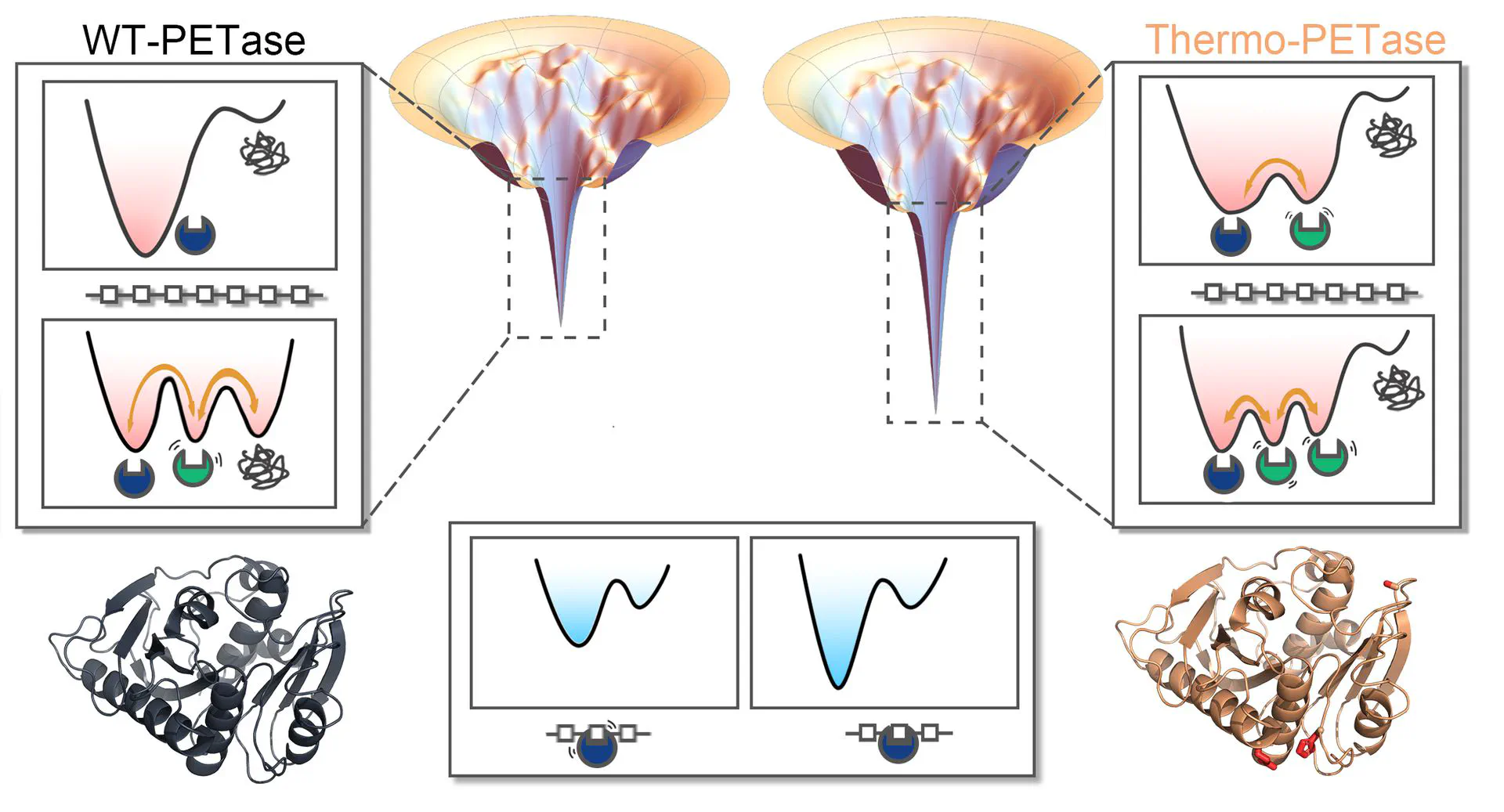Unraveling the Interplay between Stability and Flexibility in Design of Polyethylene Terephthalate (PET) Hydrolases

Abstract
The accumulation of polyethylene terephthalate (PET), a widely used polyester plastic in packaging and textiles, poses a global environmental crisis. Biodegradation presents a promising strategy for PET recycling, with PET hydrolases (PETase) undertaking the task at the molecular level. Unfortunately, due to its low thermostability, PETase can only operate at ambient temperatures with low PET depolymerization efficiency, hindering its practical application in industry. Currently, efforts to engineer PETase have primarily focused on enhancing its thermostability. However, increased stability often reduces the structural dynamics necessary for substrate binding, potentially slowing down the enzymatic activity. To elucidate the delicate balance between stability and flexibility in optimizing PETase catalytic activity, we performed theoretical investigations on both wild-type PETase (WT-PETase) and a thermophilic variant (Thermo-PETase) using molecular dynamics simulations and frustration analysis. Despite being initially designed to stabilize the native structure of enzyme, our findings reveal that Thermo-PETase exhibits an unprecedented increase in structural flexibility at the PET binding and catalytic sites, beneficial for substrate recruitment and product release, compared to WT-PETase. Upon PET binding, we observed that structural dynamics of Thermo-PETase are largely quenched, facilitating subsequent chemical reactions. Compared to WT-PETase, Thermo-PETase forms more extensive interactions with PET, resulting in a higher population of catalytically competent enzyme-substrate states, thus contributing to increased catalytic activity. Our theoretical results are consistent with experimental findings and further suggest that Thermo-PETase exhibits higher catalytic activity than WTPETase across a broad temperature range by leveraging stability and flexibility at high and low temperatures, respectively. Our findings offer valuable insights into how PETase optimizes its enzymatic performance by balancing stability and flexibility, paving the way for future PETase design strategies.
Type
Publication
Journal of Chemical Information and Modelling